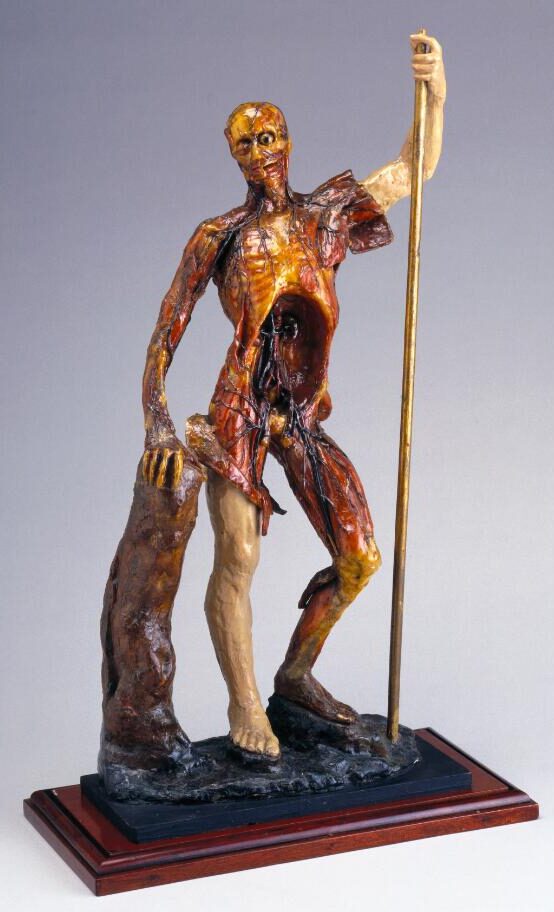
Anna Morandi Manzolini (1714–1774) was an Italian anatomist and sculptor who created some of the most beautiful and accurate anatomical models of her time. She came from a Bologna family of artists and scientists, her father being a painter and her mother a midwife. While a student at the University of Bologna, she became interested in anatomy after meeting the anatomist and professor Giovanni Manzolini, who encouraged her to study and work in that field and whom she would later marry.
Morandi might have never been successful had it not been for the influence of two native sons of Renaissance Bologna, the general Luigi Ferdinando Marsili (1680–1730) who founded in 1715 an Institute of Sciences and Arts, and the Archbishop Prospero Lambertini (1675–1758) who became Pope Benedict XIV, both dedicated to developing Bologna as a major powerhouse in the sciences and arts.
Over her lifetime, Morandi dissected over one thousand cadavers. Working in partnership with her husband, she first reduced the body parts to the bone and then reconstructed them in wax. Unlike established anatomists working in universities and civic museums, the two performed their dissections in a laboratory in their home. The models were designed specifically for teaching anatomy to medical students. Of note were the details of the internal structures of the abdominal cavity, and of an ear that could be taken apart so medical students could gain a better understanding of its internal components.

From Women and the progress of medical sciences by Melanie Lipinska (Paris: Masson, 1930), 98. Bibliothèques d’Université Paris Cité.
Morandi’s wax models were appreciated for their extraordinary accuracy and striking detail. She was widely admired, became an honorary member of the Academy of Sciences in Bologna in 1758, and discovered previously unknown anatomical structures such as the eye muscles. She was one of the few women allowed to teach at a university even though she did not have a degree, and her students and colleagues highly respected her for her knowledge and expertise.
Morandi and her husband were so well-known that they received commissions from the kings of Naples and of Poland and were honored by Catherine II of Russia, the British Royal Society, and Emperor Joseph II of Austria. Their house had a constant flow of important local and foreign visitors.
After the death of her husband in 1755, Morandi was left unable to support her family of two surviving children from her eight pregnancies and even had to place her eleven-year-old son in an orphanage. When she threatened to take her collection abroad, she was granted a modest 300 lire annually, a post as demonstrator in anatomy to the university, and permission to dissect the bodies of patients who died at the city of Bologna’s hospital.
Her work has been recognized for its scientific importance and artistic beauty, and she is remembered as a pioneer in anatomy and in sculpture.
References
- Alsop, Elizabeth. “The Lady Anatomist: The Life and Work of Anna Morandi Manzolini BY Rebecca Messbarger. University Of Chicago Press. Hardcover, 248 pages. $35.” Bookforum 2011;17(5).
- Georgina Ferry. Anna Morandi: anatomist of Enlightenment Bologna. Lancet 2018;392:375.
- ChatGPT consulted.

Leave a Reply